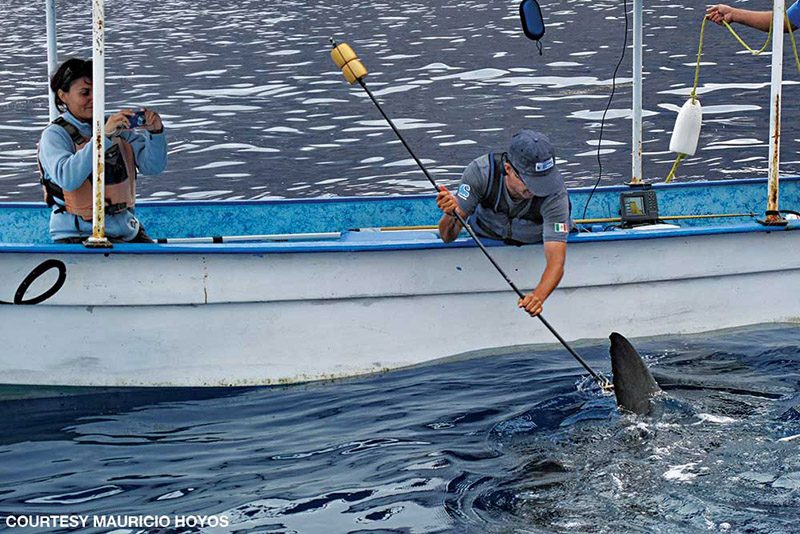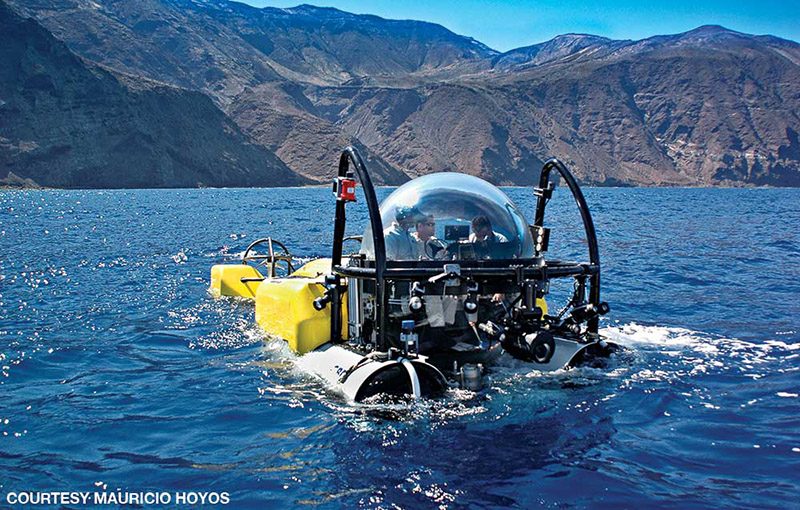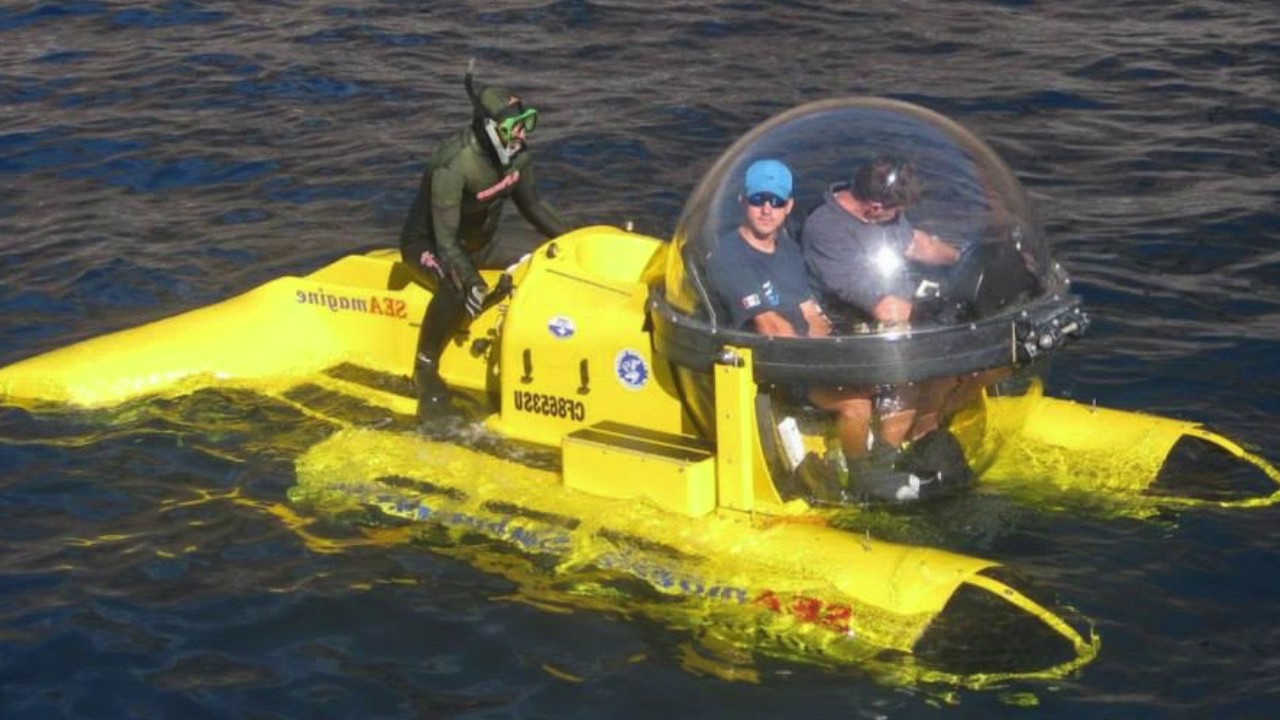Hometown: La Paz, Baja California Sur, Mexico
Years Diving: 20
Favorite Dive Destination: Guadalupe Island, Mexico
Why I’m a DAN® Member: The support, information and safety resources DAN provides are unique. I work in isolated locations, and my DAN insurance gives me the tranquility of knowing that help is only a phone call away.
When Jaws hit theaters in the summer of 1975, fear of shark attacks swept across beaches everywhere. For 4-year-old Mauricio Hoyos, however, seeing Jaws for the first time engendered a newfound admiration for great white sharks. From that day forward, he only wanted to play with shark toys. His passion for sharks led him to study biology at the National Autonomous University of Mexico and obtain a master’s degree and doctorate in marine sciences at the Interdisciplinary Center of Marine Sciences in La Paz, Mexico, on the Sea of Cortez.

Hoyos first studied blacktip sharks off Mexico’s Yucatán Peninsula and then moved on to study numerous shark species in the Sea of Cortez and the Pacific. He is a founding member of MigraMar, a nonprofit organization with a network of marine scientists who conduct research to safeguard healthy populations of marine migratory species in the Eastern Pacific. He currently is director general of Pelagios Kakunjá, a nonprofit research organization that mentors young marine biologists, and spends his workdays collecting vital data on the sharks and rays of the Eastern Pacific, especially the great white sharks of Guadalupe Island, Mexico. Almost anyone doing shark research in this part of the world is likely to cross paths with Hoyos.
As part of a citizen science expedition to the Revillagigedo archipelago early in 2018, I dived with Hoyos and Fins Attached, a nonprofit organization focused on shark research and conservation, from the M/Y Sharkwater. Fins Attached launched the Sharkwater in July 2017 in memory of shark conservationist Rob Stewart, who died in a rebreather accident in January 2017 while filming the sequel to his documentary film and exposé of the shark-fin trade, Sharkwater.

After a 24-hour boat ride southwest from Cabo San Lucas, we arrived at San Benedicto Island. I trailed Hoyos on 21 dives around three islands as he patrolled the underwater topography looking for migratory sharks to tag with acoustic tracking devices. While Hoyos conducted fieldwork, a team from Occupied VR filmed footage for a Sharkwater virtual-reality movie in honor of Stewart.
At San Benedicto Island, giant pacific manta rays soared over us; our exhaled bubbles rose up and tickled their bellies. Their close approaches allowed Hoyos to take tissue samples to gain more information about their diets and trace their genealogies and geographic distribution. Far more cautious scalloped hammerhead, Galápagos, silky and whale sharks kept their distance on this trip, which made them nearly impossible to tag. Tagging underwater with a pole spear requires a diver to get within two to three feet of the shark to place the tag just below the dorsal fin; tags can cost from $1,800 to $3,500, so missing is not an option.

On our second day of diving, we were in the water before sunrise at a site named The Boiler. A juvenile whale shark greeted us in the dim light before numerous giant pacific manta rays with 15-foot wingspans arrived. Hoyos took tissue samples for analysis, while we took photographs of the manta rays for an online database. Researchers use this catalog of photos to identify and differentiate mantas by the distinct markings on their undersides, enabling researchers to estimate the number of unique individuals in the local population and determine which mantas are just passing through.
At Roca Partida we swam large circles, sometimes fighting strong currents, around the pinnacle that pops out of the water from its base 200 feet below. Armed with a satellite tag on a pole spear, Hoyos swam after one 20-foot-long juvenile whale shark that appeared out of the deep blue water, but the gliding whale shark descended beyond a safe diving depth before he could get close enough to it.

Scientists estimate that fishermen kill 70 million to 100 million sharks per year, in large part for shark-fin soup, a Chinese delicacy. The future for sharks might seem grim, but people like Hoyos are working to change that. His research has paved the way for a larger marine protected area (MPA) at Revillagigedos. By tagging and tracking sharks in the area, he showed that they hunted, fed and mated at Roca Partida but returned to San Benedicto Island to birth and raise their pups.
“Once the pups grow big and strong enough, they migrate to Roca Partida to hunt, grow and mate as part of the next generation,” Hoyos explained. The Mexican government used his research to help justify creation of the Revillagigedo Archipelago National Park in November 2017, replacing four small MPAs (one for each island at Revillagigedo) with one 57,177-square-mile MPA, the largest of its kind in North America.

It’s ironic that the film that inspired mainstream loathing of sharks is the same one that inspired Hoyos to save them. Peter Benchley, the author of Jaws (the book that inspired the movie), never intended for his story to instigate the “spasm of senseless, macho shark killing” that it did. He spent most of his life advocating for protection of sharks and healthy marine ecosystems after the release of the movie. Benchley would have been proud to see Hoyos studying sharks and using research to defend them and their habitats.
Explore More
See Mauricio Hoyos in action in this video.
© Alert Diver — Q1 2019

